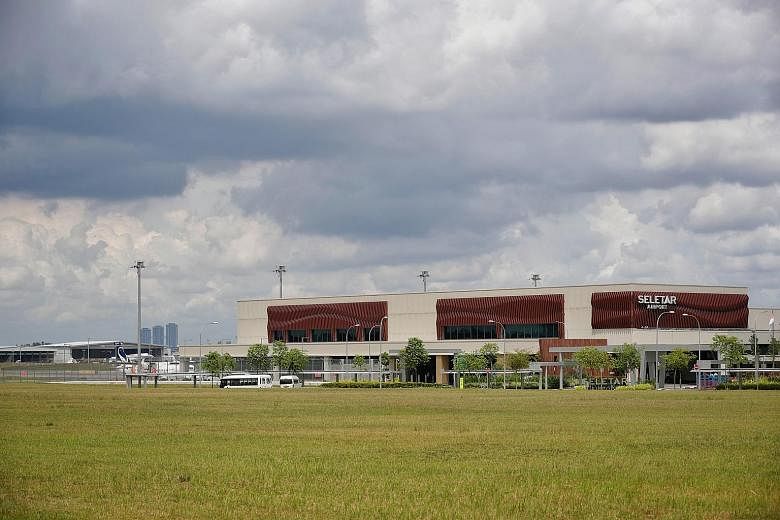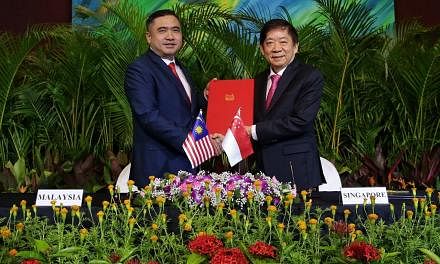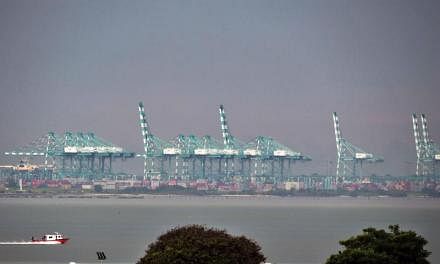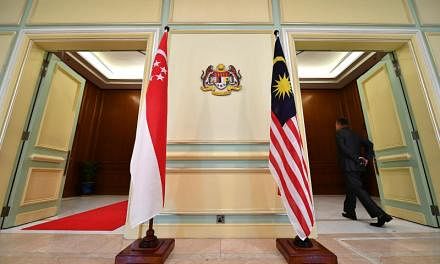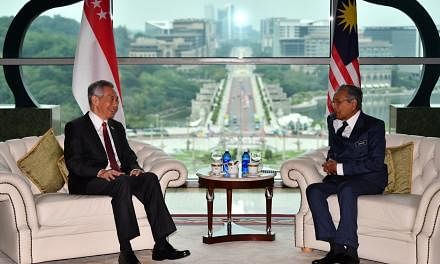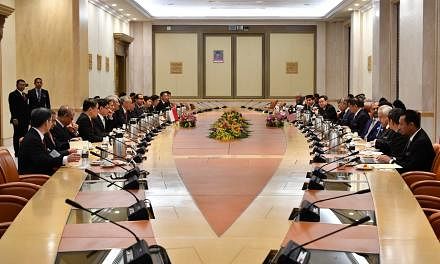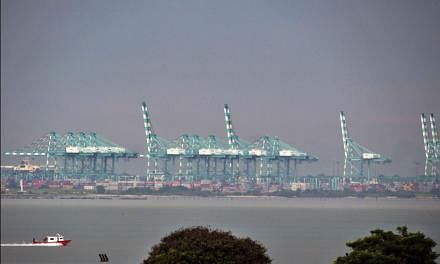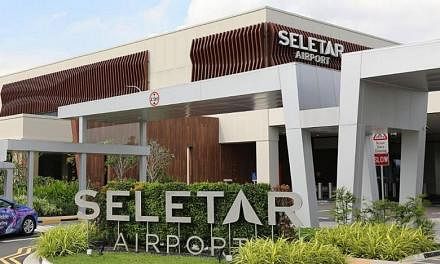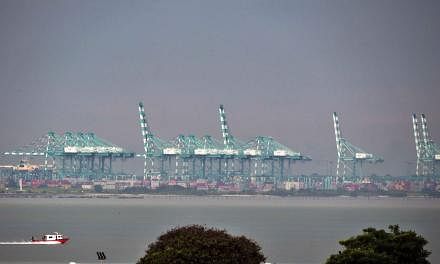SINGAPORE - Transport Minister Khaw Boon Wan has stressed that Singapore's plans to introduce an Instrument Landing System (ILS) for Seletar Airport - which will guide pilots landing there with ground instruments instead of relying on their visual assessment - will not pose any safety or security risks to operations at Johor's Pasir Gudang Port.
He was responding on Wednesday (Dec 12) to remarks made by his Malaysian counterpart Anthony Loke.
In a 90-second video posted on his Facebook page, Mr Loke claimed that the Pasir Gudang Port would encounter higher risks due to the height restrictions that Singapore wants to set for Seletar's ILS.
He said: "Even a crane would break the height limit. We can't even build tall buildings over Pasir Gudang if we allow that flight path."
Speaking to reporters, Mr Khaw said: "I've watched the video, it's a good video. I commend their video team. But I think the video contains a few inaccuracies."
Referring to Mr Loke's comments on safety concerns with regard to the height restrictions proposed, Mr Khaw said: "That's not how ILS works. ILS is like autopilot in an aircraft, it is a tool for the pilot. The pilot can always have manual intervention if security concerns require it... The pilot retains full control throughout the flight."
Mr Khaw added: "The key point is if it were a technical concern, with goodwill, I am confident a mutually satisfactory technical solution can be found. The situation seems to be that they are using this technical excuse to trigger a demand to change the airspace arrangement."
Malaysia has said it wants to take back air traffic services for the airspace over southern Johor which were delegated to Singapore in 1974. Mr Khaw stressed that the arrangement "has worked very well, benefiting all stakeholders in this region", so he was "truly baffled" by Malaysia's recent stance.
The first signs of Singapore-Malaysia tensions over Seletar Airport came to light on Nov 23, when Malaysian carrier Firefly made the surprising announcement that it would suspend all flights to Singapore from Dec 1, the day it was supposed to move its operations from Changi to Seletar Airport.
Two days later, the Civil Aviation Authority of Singapore (CAAS) explained that this was because the Malaysia Airlines subsidiary had not received approval from its regulator, the Civil Aviation Authority of Malaysia (CAAM), to make the move.
Firefly had agreed, as early as in 2014, to move to a new passenger terminal to be built at Seletar to handle turboprop flights, which it operates.
According to CAAM, there are regulatory issues that need to be resolved between the civil aviation authorities of both countries over the proposed move, as well as outstanding airspace issues.
In a statement on Wednesday, Malaysia's Transport Ministry said the current tensions between the two countries over the procedures at Seletar are "unnecessary and can be avoided" if the ILS is implemented only for Runway 03 on the southern side of the airport, and not for Runway 21 on the northern side.
Responding to media queries on this, Singapore's Ministry of Transport (MOT) said in a statement on Wednesday night that CAAS had informed its Malaysian counterpart at a meeting on Nov 29 that Singapore would need to put in place instrument flight procedures for both the northerly and southerly approaches into Seletar Airport.
This is necessary because aircraft land and take off into the wind. "In this region, winds blow from a north-easterly direction for half of the year, and a south-westerly direction for the other half of the year. Therefore, flight procedures for a southerly approach cannot safely replace all flight procedures for the northerly approach," MOT said.
Malaysia has also suggested that the implementation of ILS procedures for the northerly approach into Seletar Airport is a "clear violation of Malaysia sovereignty and international law and standards".
This is also not true, said Singapore's MOT. The nature of international civil aviation is such that flights have to traverse the airspace of different countries.
It is not uncommon for flight procedures to or from airports in one country, especially those near other countries, to traverse the territories of neighbouring countries, it added.
This does not entail a violation of the sovereignty of the countries being overflown, MOT said in its statement, adding that the ILS procedures for some Malaysian airports also extend into the territories of neighbouring countries.
Since the suspension of flights, Firefly has asked for its previous landing slots at Changi Airport to be returned.
Asked if Singapore would consider this, Mr Khaw indicated on Wednesday that might not be possible.
He said: "Firefly knew that we are shifting them to Seletar and they have planned on that basis. They inspected Seletar. They are very pleased with Seletar Airport and as a result, months ago, they applied for slots in Seletar and we welcome them there and their slots in Changi have therefore been given up and redistributed to other airlines."
Mr Khaw also welcomed Malaysia's move to de-escalate tensions arising from its ongoing maritime dispute with Singapore. He said Malaysia had withdrawn two of its vessels that had been camping in the Republic's territorial waters.
One ship still remained in Singapore's waters as of Wednesday. Mr Khaw urged Malaysia to withdraw completely as the vessel's presence raises "unnecessary risks".
